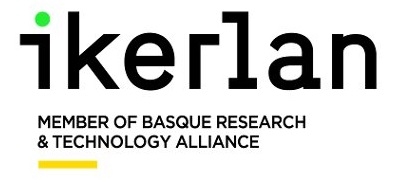i4Q Manufacturing Line Reconfiguration Guideline¶
General Description¶
The i4Q Manufacturing Line Reconfiguration Guideline (i4QLRG) solution consists of a guideline from i4Q Manufacturing Line Reconfiguration Toolkit (i4QLRT). The guideline does not require digital technologies for development. Furthermore, data analytics and visualisation will use a web-based interactive development environment for code and data. This software is flexible to configure the user interface and provide support in data science, scientific computing, and machine learning. This web uses the contents of the guide in natural language dialogs to support. To provide this web, it uses the sphinx library. This library is an open-source package that provides a fast and flexible data structure that facilitates working with relational and structured data. Sphinx was originally created for Python documentation, but it provides excellent facilities for documenting software projects in a variety of languages.
Features¶
The i4Q Manufacturing Line Reconfiguration Guideline (i4QLRG) is a solution that consists of a guideline from i4Q Manufacturing Line Reconfiguration Toolkit (i4QLRT).
This solution uses the guideline’s contents in natural language dialogs to support.
This guideline provide information about the different algortihms
ScreenShots¶

–

Comercial Information¶
License¶
A free-software license
Pricing¶
Subject |
Value |
|---|---|
Payment Model |
One-off |
Price |
0 € |
Associated i4Q Solutions¶
Required¶
No other solution is required for operation
Optional¶
No other solution is required for operation
System Requirements¶
The component may be run on any platform that support Docker images.
- docker requirements:
4 GB Ram
64-bit operating system
Hardware virtualisation support
Installation Guidelines¶
Resource |
Location |
|---|---|
Last release (V.0.1.0) |
Installation¶
This component is designed to be used by both docker and kubernetes.
Docker environment:
For docker-based installation it can be achieved by running a Docker-compose command. For each data processing algorithm, a separate Docker-compose file is provided. For example, the following command starts an instance of the component
cd orchestration
docker-compose -f docker-compose.yaml up --build --remove-orphans
OR
docker run -d -p 80:80 --restart=always --name LRG registry.gitlab.com/i4q/lrg:0.0.2
Kubernetes environment:
To deploy it on Kubernetes, helm files are prepared, which can be launched from commands. For example, the following command starts an instance of the Machine-Job Assignment Naive Algorithm.
coming soon
User Manual¶
How to use¶
This solution is a web service in which the functionality of different algorithms provided by the i4Q LRT solution. The web service contains a menu where we can see the following sections:
- Introduction
Manufacturing Line definition
Reconfigurable Manufacturing Systems (RMS) and Reconfigurable Manufacturing Line (RML) definitions
- Manufacturing Line Reconfiguration Problems and Solutions
Assembly Line Balancing Problem (ALBP)
Transfer Line Reconfiguration Problem (TLRP)
Balancing with Equipment Selection Problem (BESP)
Balancing with Choice of Machine Problem (BCMP)
Balancing with special machine design: Moving Table Machine Problem (BMTMP)
Balancing with special machine design: Rotary Table Machine Problem (BRTMP)
Inbound Reconfigurable Transportation Systems (IRTS)
Static Facility Layout Problem (SFLP)
Dynamic Facility layout problem (DFLP)
Multi-Facility Layout Problem (MFLP)
Reconfigurable Manufacturing Systems for Scalability Planning (RMS-SP)
Reconfigurable Manufacturing Systems for Machine Selection (RMS-MS)
Celular Reconfigurable Manufacturing Systems for Machine Selection (CRMS-MS)
Within each “Manufacturing Line Reconfiguration Problems and Solutions” we will find the following options:
Problem description
Objective funciton
Data Input
Data Output
Algorithm

